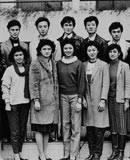不支持Flash
|
2002年Text 2(2)
Indeed the quest for true artificial intelligence has produced very mixed results. Despite a spell of initial optimism in the 1960s and 1970s when it appeared that transistor circuits and microprocessors might be able to copy the action of the human brain by the year 2010, researchers lately have begun to extend that forecast by decades if not centuries.
What they found, in attempting to model thought, is that the human brain’s roughly one hundred billion nerve cells are much more talented—and human perception far more complicated—than previously imagined. They have built robots that can recognize the error of a machine panel by a fraction of a millimeter in a controlled factory environment. But the human mind can glimpse a rapidly changing scene and immediately disregard the 98 percent that is irrelevant, instantaneously focusing on the monkey at the side of a winding forest road or the single suspicious face in a big crowd. The most advanced computer systems on Earth can’t approach that kind of ability, and neuroscientists still don’t know quite how we do it.
50. The author uses the example of a monkey to argue that robots are .
[A] expected to copy human brain in internal structure.
[B] able to perceive abnormalities immediately.
[C] far less able than human brain in focusing on relevant information.
特别说明:由于各方面情况的不断调整与变化,新浪网所提供的所有考试信息仅供参考,敬请考生以权威部门公布的正式信息为准。





